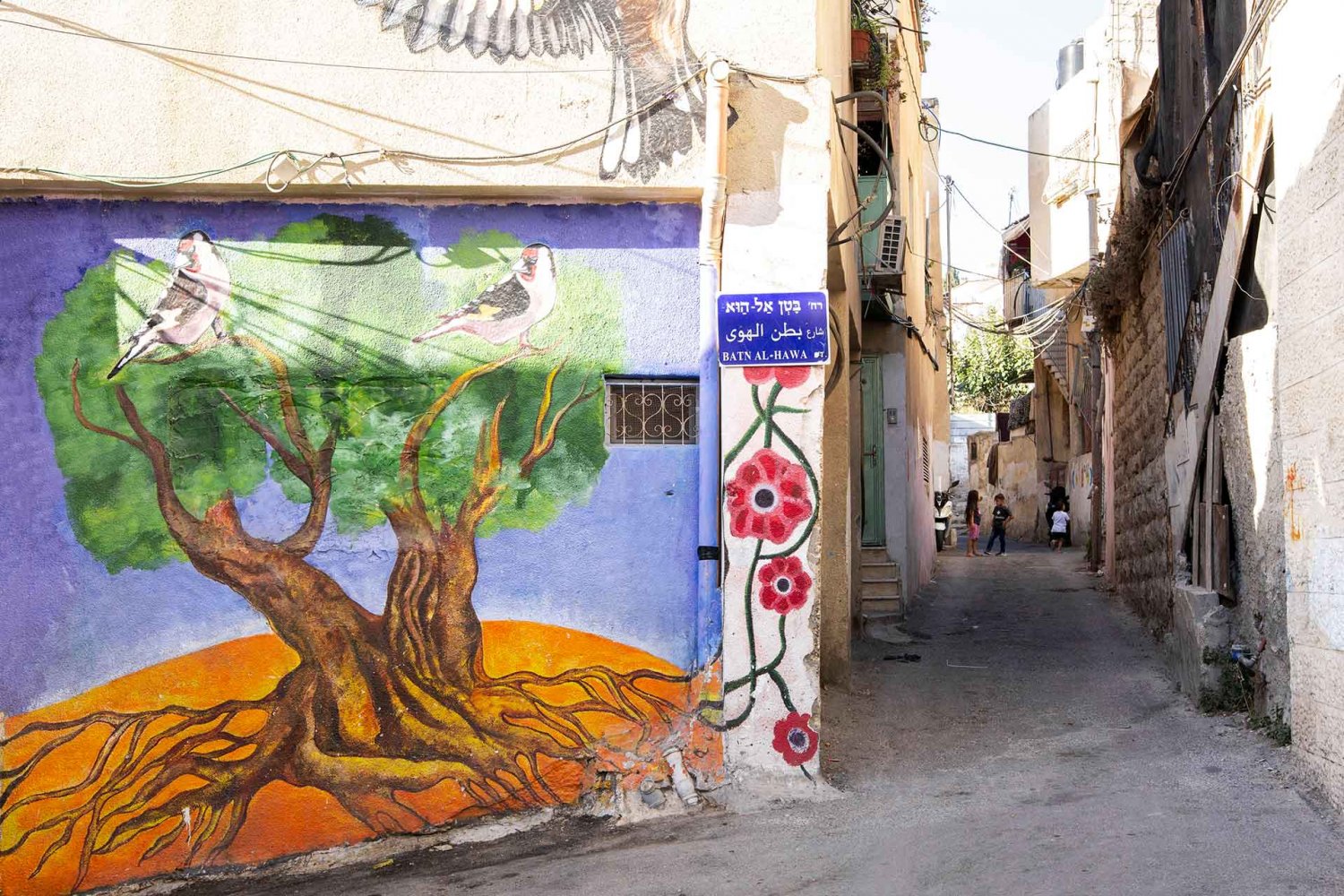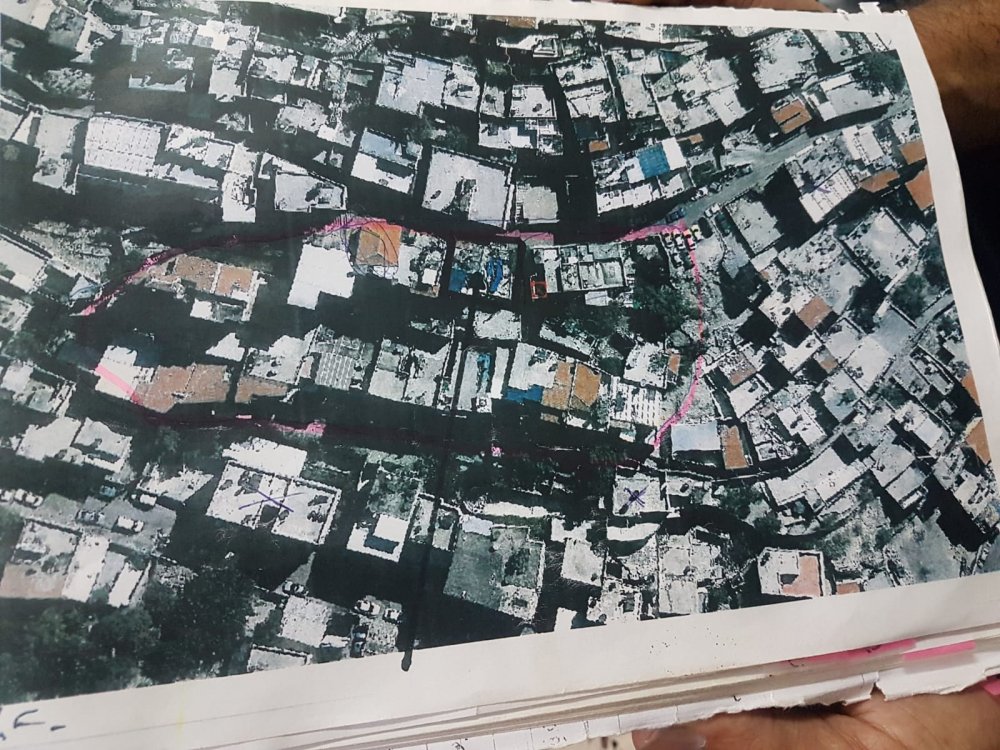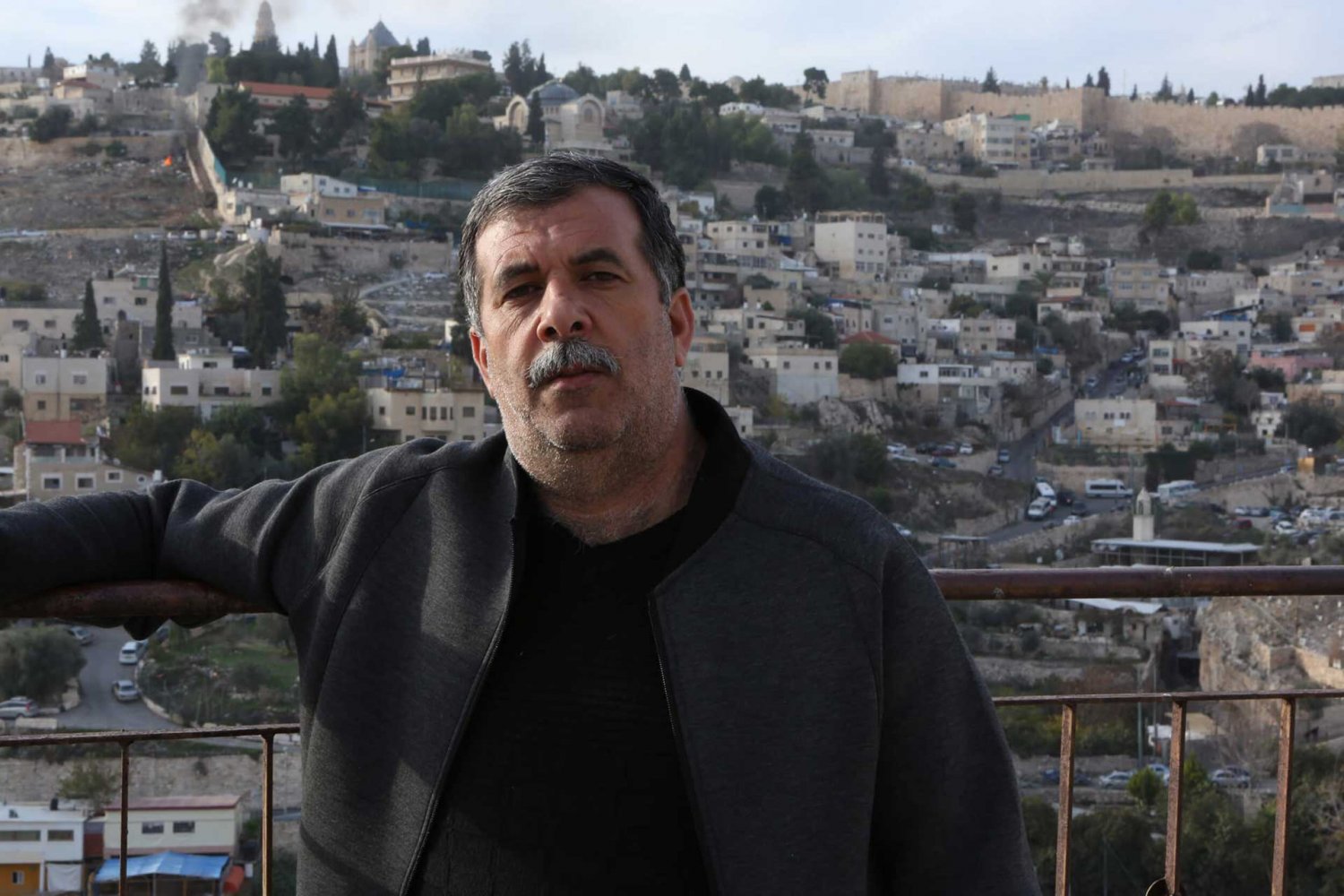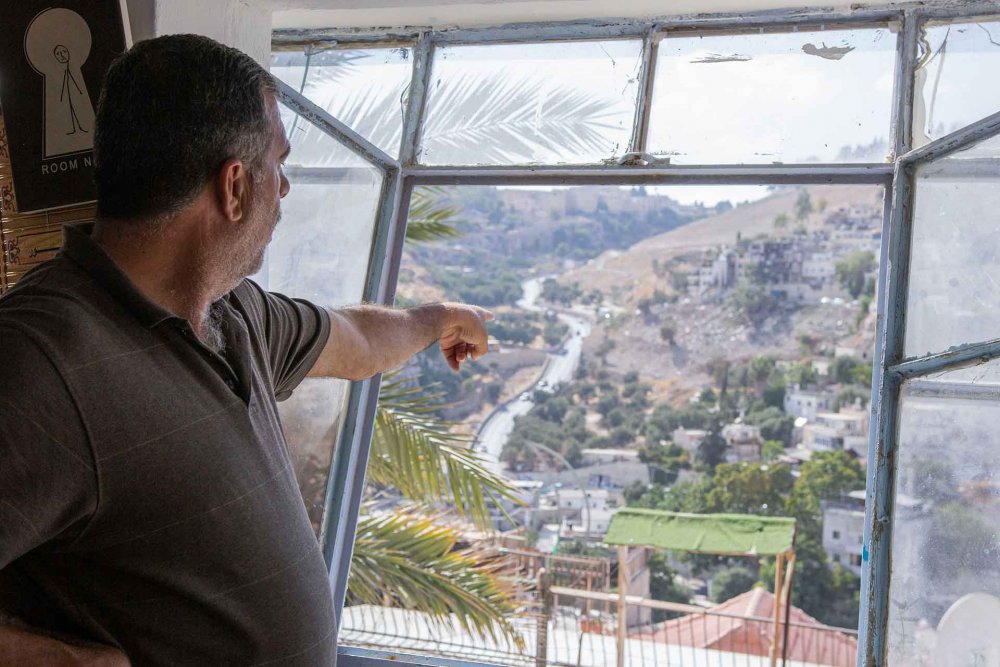Zoheir Rajabeh is a Palestinian father of five in his 50s.1 He lives in Batn al-Hawa in the Silwan neighborhood of East Jerusalem, an area whose residents have been targeted for expulsion by Israeli settler organizations. The Jewish settler organization Ateret Cohanim claims that Zoheir’s land—the whole neighborhood, in fact—was owned by Yemeni Jews before 1948, and they plan to reclaim it.

Credit:
Mays Shkerat for Jerusalem Story
Trapped in a System That Seeks to Remove Them
Snapshot
Zoheir Rajabeh, a resident of the Batn al-Hawa neighborhood of Silwan, lives in limbo, while Israeli settlement organizations work with Israeli authorities to forcibly expel him and his family.
In 1966, Zoheir’s father bought a 150-square-meter plot of land from the Badran family; it had a two-room structure on it. Zoheir was born in that house and still lives in it today. Like other Palestinian Jerusalemites, Zoheir’s family needed to build additional floors when the family outgrew the two rooms, but the city would not grant them the requisite permits. In all, six floors were added without permits. “It is impossible to obtain a building permit in Jerusalem,” said Zoheir. “After my brothers and I got married, we needed a roof on top of our heads, and we had to build.”2
Only 13 percent of East Jerusalem land is allocated for Palestinian use.3 Israel occupied East Jerusalem in the 1967 War and de facto annexed it in contravention of international law, subsequently instituting measures to increase its Jewish population, while forcing Palestinians out (see Where Is Jerusalem?).4
Without a permit to build, the Rajabeh home was classified as an illegal structure and slated for demolition, like tens of thousands of other Palestinian homes in East Jerusalem.5
“We are the owners of the land; we have all the legal documents proving that my father bought this property in June 1966 and then built our home,” said Zoheir. “The settlers allege that they own the land and that our construction was illegal on it. They know that Palestinians can’t obtain building permits.”
In 2002, Ateret Cohanim and individual settlers filed a lawsuit against the neighborhood’s Abu Nab family at the Jerusalem District Court, claiming that they had built on the land without a permit. In 2015, the court dismissed the case for lack of jurisdiction. According to Israeli law, the Office of the Municipal Prosecutor is the official body authorized to make criminal indictments for building without a permit. The judge muddied the waters, however, by writing in the decision that a “property dispute” case should be filed to determine the owners of the land according to applicable Israeli laws and procedures.
Using this opening—the newly created property dispute—Ateret Cohanim, with the help of the Office of the Custodian of Absentee Property (CAP), served 81 families of Batn al-Hawa (approximately 436 individuals) with expulsion orders over a period of several years.6 On May 19, 2015, Zoheir received an expulsion order for his property issued by Mordechai Bozarviv (known as Moti), the legal representative of the Benvenisti Trust. These expulsion orders had no legal basis. The court did not look into the “property dispute” case; it only mentioned it in the ruling.
Since then, Zoheir has been fighting the expulsion order in the Israeli courts. He and his brothers have tried to prove their legal ownership of the land. “My brothers and the witnesses to the purchase testified,” he explained. “We provided all the documents that we have, but our ownership claim is very weak.”
On the day Moti delivered the expulsion order, he offered to pay up to NIS 30 million (equating to nearly USD 8 million using the exchange rate at that time) to buy the building from Zoheir. “We will take over the house sooner or later,” Moti declared to Zoheir. “You should take the money and start a new life for your family in a better city with better living conditions.” Zoheir rejected his offer.
Registering land and proving ownership is particularly difficult for Palestinian Jerusalemites (see Land Settlement and Registration in East Jerusalem). Indeed, Israel froze the process of land registration altogether for 51 years, from 1967 to 2018. Moreover, it considers many Palestinians to be “absentees” in accordance with the 1950 Absentees’ Property Law, making the registration process difficult and fraught with risk (see How Israel Applies the Absentees’ Property Law to Confiscate Palestinian Property in Jerusalem). For many Palestinians, attempting to register their land results in its confiscation by the CAP (see An Expert Unravels the Complexities of Land Ownership in East Jerusalem). Palestinians often lack the documents required to prove their right as owners or tenants.
Since 2015, Zoheir has been trying to prove that his family own this property. “We feel that the judges and the courts are not in our favor,” he began. “I have spent several years in Israeli prisons, and I know the judicial system very well. The system always takes the side of the settlers. I’ve even seen judges advising the settlers what to say to strengthen their case against us,” Zoheir added. Usually, the Israeli courts rule in favor of the settlers.
Zoheir shared a story about one of the families from the neighborhood. The family had been sure that their expulsion could happen at any moment. One of the methods that settlers and settler organizations use is the “money method,” in which they entice Palestinians to sell their property or transfer their protected tenancy status. “Settler groups took advantage of the family’s fear of expulsion, and offered them a house in Beit Hanina,”7 Zoheir said. “They were about to agree, but later the settlers started changing the deal, so the family realized they were being tricked.”
Zoheir explained different ways that settler organizations have tried to take over Palestinian houses in Batn al-Hawa. For example, during the 1990s, they offered to demolish the whole neighborhood, cover all the expenses, and then obtain building permits for 100 apartments: 50 for settlers, and 50 for Palestinian residents. Zoheir explained: “Of course, we didn’t take that seriously, although they prepared an alternative town planning scheme to submit to the Jerusalem Municipality, and they promised they would provide a temporary housing unit to house us until the project is completed. They try in whatever way to encourage people to leave, but we know if we leave, we will never be allowed to come back.”
Zoheir reported daily harassment by settlers and Israeli police. He recalled one day when he asked a settler to move a vehicle because it was blocking the way: “Even settlers’ transportation is run by the Israeli police. He told me that the busses are managed by the police and that the settlers are not responsible for busses blocking the roads.”
The neighborhood’s teenagers are provoked by the settlers, and periodically are even arrested by the Israeli police. “On several occasions, my kids were sitting in front of our house,” Zoheir relayed, “and they got into arguments with settlers who provoked them. In a matter of minutes, the police came and arrested anyone who was accused by settlers.”
Zoheir was fired from his job for defending his home: “After a broadcast interview with Israeli television, I was fired from my job. My boss mentioned this interview several times. It’s true, she me paid everything I was owed, but I was fired after more than 10 years of work just because I was defending my property rights.”
At this writing in April 2023, Zoheir’s family remains in legal limbo, awaiting a hearing in the courts. Often such extensions, while creating great stress and uncertainty for the families, are the only hope they have in a system that is stacked against them.
Notes
Research for this story was conducted in February–March 2020 and September 2021 by the Jerusalem Story Team.
This and all subsequent quotations from Zoheir in this story were taken from an interview with the Jerusalem Story Team conducted in September 2021.
“Special Focus: East Jerusalem: Key Humanitarian Concerns,” United Nations Office for the Coordination of Humanitarian Affairs (OCHA), March 2011.
Amir Chesin, Bill Hutman, and Avi Melamed, Separate and Unequal: The Inside Story of Israeli Rule in East Jerusalem (Cambridge, MA: Harvard University Press, 1999), 31–32.
Irus Braverman, “Powers of Illegality: House Demolitions and Resistance in East Jerusalem,” Law & Social Inquiry 32, no. 2 (2007): 333–72.
“Joint Urgent Appeal to the United Nations Special Procedures on Forced Evictions in East Jerusalem,” Palestinian Human Rights Organisation Council, the Civil Coalition for Palestinian Rights in Jerusalem, Community Action Center, al-Quds University, and Cairo Institute for Human Right Studies, March 10, 2021.
This is a common refrain in such cases—settlers urging Palestinians living in the crowded Old City to move to the Palestinian neighborhood of Beit Hanina in East Jerusalem, whatever that entails.



